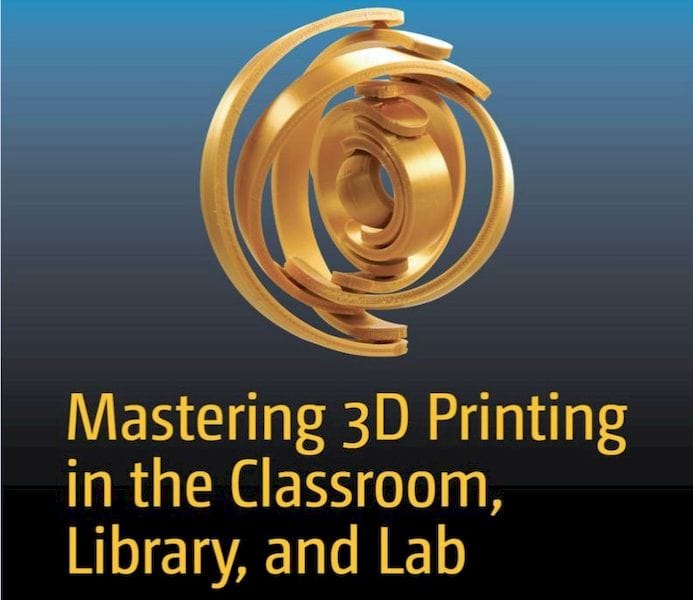![Mastering 3D Printing in the Classroom, Library and Lab [Source: Amazon]](https://fabbaloo.com/wp-content/uploads/2020/05/image-asset_img_5eb0927232b87.jpg)
This week’s selection is “Mastering 3D Printing in the Classroom, Library, and Lab” by Joan Horvath and Rich Cameron.
There is no doubt that 3D printers have arrived in today’s classrooms. I suspect that in almost every school in the Western world you may find a 3D printer or two installed, and some may even be in use.
That last point is the problem here: while it’s easy to buy a 3D printer, it’s a lot more challenging to have them working consistently to the aid of students. Machines not only have to be selected, purchased and installed, but also maintained, queued, explained and leveraged. That’s the challenging part.
This book attempts to get at some of that conundrum. They explain:
“With this book, the authors give practical, lessons-learned advice about the nuts and bolts of what happens when you mix 3D printers, teachers, students, and the general public in environments ranging from K-12 and university classrooms to libraries, museums, and after-school community programs.”
This echoes the experience I’ve had with 3D printers in makerspaces: you really have no idea what is going to happen until you unleash people on the situation. Many unexpected things will happen, such as people using the machines in ways you — and the equipment’s designers — had never fathomed.
As one might expect with a book of this type, there is a considerably large series of chapters explaining the basics of 3D printing, including the types of 3D printing processes, materials involved, the typical slicing workflow, print parameters and post-processing. But what’s more interesting is the rest of the book.
Living With Your 3D Printer
Beginning with the chapter, “Living With Your 3D Printer” we see some useful advice regarding selecting a 3D printer by comparing the typical 3D printing processes and their implications on materials and workflows. They cover the common question of whether to acquire “one big printer or several small ones”, which is a question I always hear.
My answer is to have several small ones, because you can always split your 3D model into smaller pieces and assemble afterwards, and the fact that there is little doubt one of the 3D printers will fail and you’ll want at least one surviving to keep things going.
After the detailed review of all the factors that may affect printer selection, a reader of this book should be in a very good position to make an intelligent choice of machine – or machines.
Following this the book explains the basics of 3D printer operation, from assembly and setup, to selecting a model and material, to removing the completed part from the machine.
Classroom Experiences With 3D Printing
I believe the most interesting sections of this book revolve around the classroom experience. There the authors discuss issues such as the often length print durations, and how to manage them. Print queuing is incredibly important when there is a room full of eager students, each with a design they want printed.
The book explores how the 3D printing infrastructure in a school can be used for more purposes than merely demonstrating design and manufacturing. They look at art projects, theatrical applications and even language arts and social studies.
One important section discusses the amount of technology one can effectively use at elementary school levels. You would be surprised how much can be absorbed by junior students, but there is a limit. Special needs children’s use of 3D printing is also discussed.
University and Community 3D Printing
Finally, the book explores university and community-level applications of 3D printing briefly, with an emphasis on makerspaces, particularly in libraries. This has been a common development that’s taken place across the world.
If your school is considering deploying 3D printers, or already has done so with less success, I recommend taking a look through this book, which will surely provide some interesting new angles.
Via Amazon











This week’s selection is “3D Printing Projects” by Dorling Kindersley, a.k.a. “DK”.